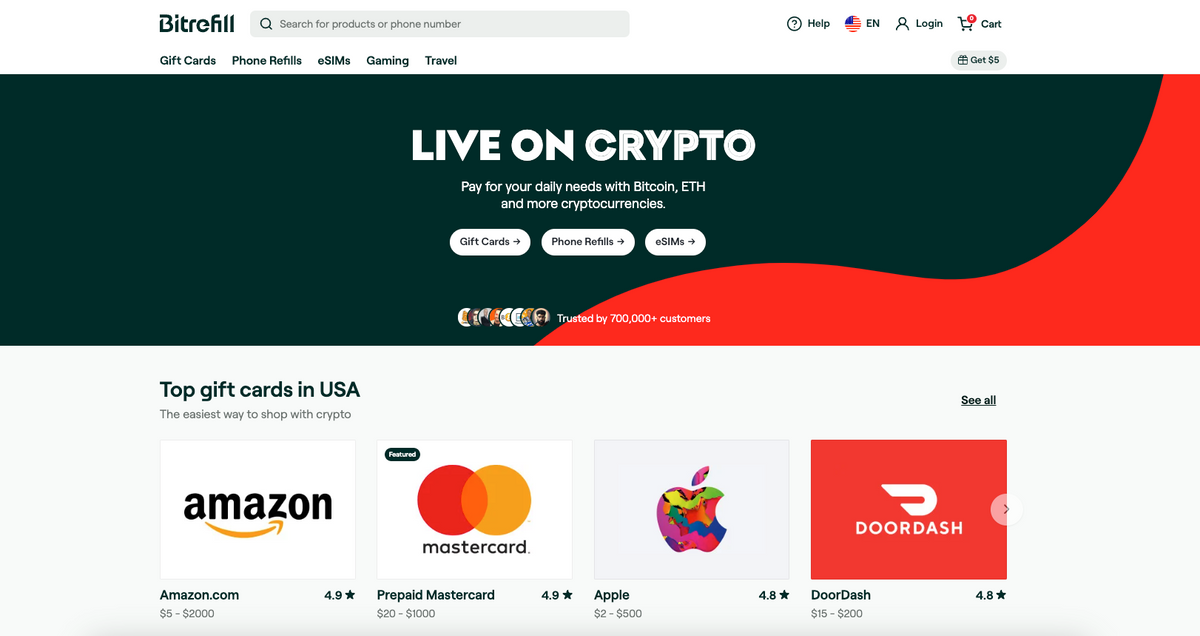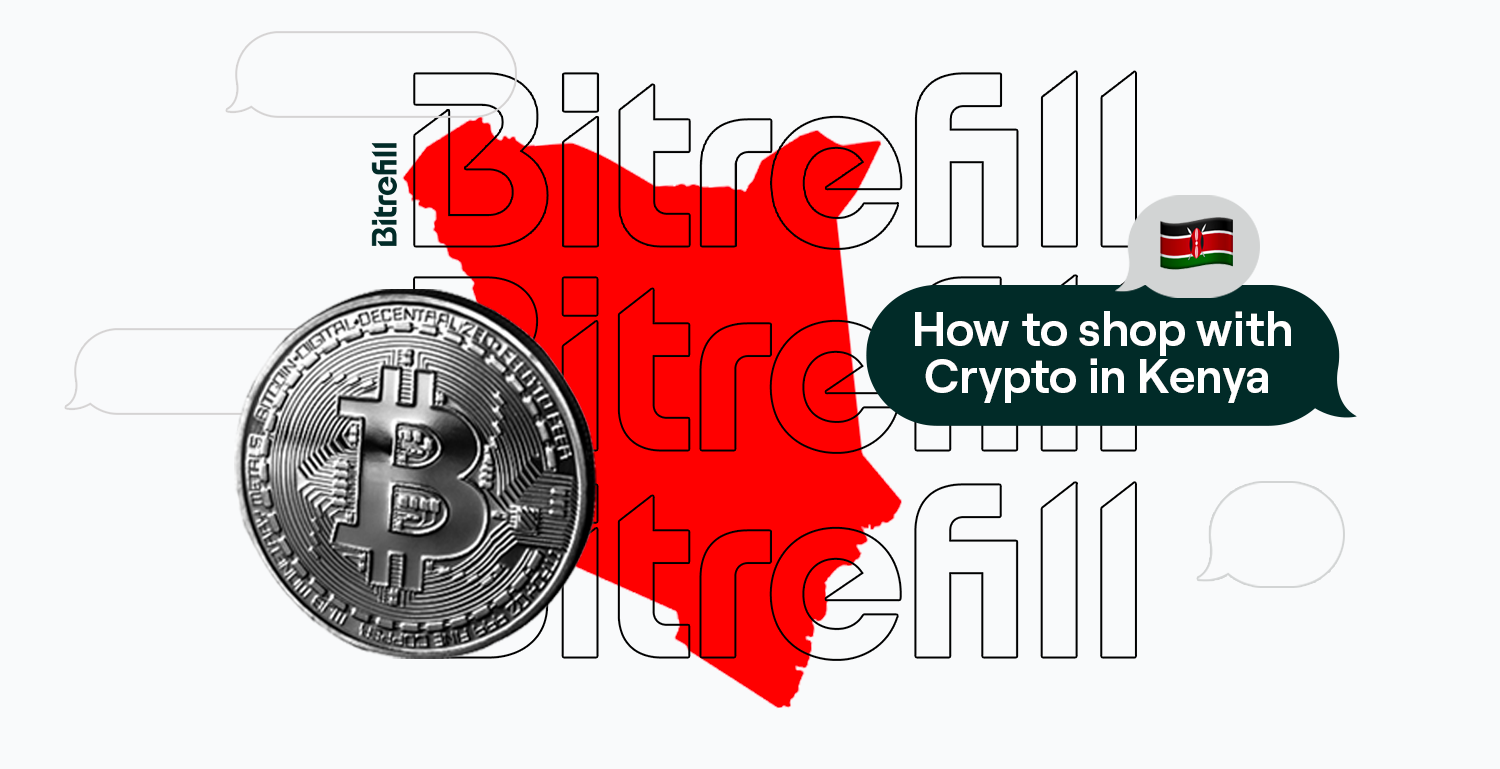Introduction
In the digital age, cryptocurrencies like Bitcoin and Ethereum are redefining the concept of money. Beyond their role as investment assets, these digital currencies are emerging as viable methods for online transactions.
This shift towards crypto payments opens up new avenues for consumers and businesses alike, offering an alternative to traditional financial systems.
How to Make a Payment with Bitcoin, Ethereum, or Crypto Online
We will explore these methods, each offering a unique way to utilize your digital assets for transactions in the online space.
Method 1: Pay with Bitcoin or Crypto Buying Gift Cards, Phone Refills, or eSIMs
One of the most accessible ways to use cryptocurrencies for everyday transactions is through platforms like Bitrefill. The platform allows users to convert their Bitcoin or other cryptocurrencies into usable forms like gift cards, phone refills, and eSIMs. This method involves the following steps:
- Visit Bitrefill, a pltform that offers over 5000 gift cards, phone refills and eSIMs and supports cryptocurrency transactions.
- Select your desired product: Choose the specific product you wish to purchase, such as a gift card for a favorite retailer or a phone refill package.
- Add to cart and checkout: Add your selection to your cart and proceed to the checkout (No account is required).
- Choose cryptocurrency as payment method: At the payment screen, select the option to pay with Bitcoin or another cryptocurrency. Bitrefill accepts the following payment methods: Bitcoin, Lightning, Ethereum, USD Coin (Ethereum or Polygon), Tether (Ethereum, Polygon or Tron), Binance Pay, Litecoin, Dogecoin and Dash.
- Complete the transaction: Follow the prompts to send the exact amount of cryptocurrency needed from your wallet to the provided address.
- Receive confirmation and product details: After the transaction is confirmed, you will receive the gift card code or refill details via email or directly on the platform.
This method offers several advantages. It bridges the gap between cryptocurrency and real-world services, providing a tangible use for digital assets. Additionally, it's fast, convenient, and opens up a world of services that might not directly accept crypto payments.
Method 2: Pay with Bitcoin or Crypto Using a Crypto Card
Cryptocurrency cards are revolutionizing how we think about and use digital currencies. These cards function similarly to traditional debit or credit cards but are funded with cryptocurrencies like Bitcoin and Ethereum or any other cryptocurrency.
Here’s how you can use a crypto card for online payments:
- Select a crypto card provider: Research and choose a provider that offers a crypto card compatible with your preferred cryptocurrencies. For example, with the Bitrefill card you can pay for your everyday purchases with crypto. It also gives you the ability to spend up to 15,000 EUR/month with competitive exchange rates.
- Apply for the card: Complete the application process, which may include identity verification and agreeing to terms and conditions.
- Load your card with cryptocurrency: Transfer cryptocurrency from your wallet to your card's linked crypto account.
- Activate your card: Follow the provider's process to activate your card once it arrives.
- Use for online payments: Use the card for online purchases by entering the card details as you would with a standard debit or credit card.
- Monitor transactions: Keep track of your spending and manage your card through the provider's app or website.
Crypto cards maintain the convenience of traditional cards while leveraging the benefits of digital currencies. They act as a bridge between the crypto economy and the traditional financial system, enabling seamless transactions across both worlds.
Method 3: Pay with Bitcoin or Crypto Completing a P2P Payment
Peer-to-Peer (P2P) payments represent the core ethos of cryptocurrencies — direct transactions between individuals without intermediaries. To complete a P2P crypto payment, follow these steps:
- Find a reputable P2P platform: Research and select a trusted platform that facilitates P2P cryptocurrency transactions.
- Create and verify your account: Register for an account and complete any necessary verification steps for security.
- Set up a trade: Post a trade request or search for existing offers that meet your transaction needs.
- Communicate with the other party: Use the platform's secure messaging system to discuss details with the counterparty.
- Initiate the transaction: Follow the platform's process to send or receive the cryptocurrency. This may include using an escrow service for added security.
- Confirm receipt of funds: Once the transaction is complete, both parties should confirm receipt of the funds or cryptocurrency.
- Leave feedback: Rate the transaction experience to help build trust within the P2P community.
P2P payments with crypto are favoured for their directness and the control they offer over transactions. However, it's crucial to practice due diligence and use secure platforms to mitigate risks.
Pros and Cons of Paying with Cryptocurrency
Pros Explained
- Peer-to-Peer: The direct nature of cryptocurrency transactions eliminates the need for intermediaries, fostering a more decentralized and inclusive financial system.
- Fewer Fees: Crypto transactions typically involve lower fees compared to traditional banking, making them cost-effective.
- Pay from Anywhere: With just an internet connection, you can execute transactions from any corner of the globe.
- Available to Everyone: Cryptocurrencies are accessible to anyone with internet access, democratizing financial services.
Cons Explained
- Transaction Fees: While generally lower, crypto transactions do incur network fees, which can fluctuate based on the congestion and the specific blockchain used.
- Price Volatility: The value of cryptocurrencies can be highly volatile, introducing an element of risk in terms of the transaction value.
- Not Reversible: Once confirmed, crypto transactions cannot be reversed, making errors potentially costly.
- Risk of Loss: The responsibility of securing private keys lies with the user, and losing them means losing access to the funds.
FAQs about Paying with Bitcoin, ETH, or Crypto Online
- Q: How secure are crypto transactions?
- A: Crypto transactions are secured by blockchain technology, making them extremely resistant to fraud and hacking.
- Q: Can I convert my crypto back to fiat currency?
- A: Yes, there are several platforms where you can exchange your cryptocurrency for traditional fiat currency.
- Q: Are crypto payments accepted worldwide?
- A: While acceptance is growing, it varies by region and vendor. Services like Bitrefill expand usability by offering crypto-based purchases for a variety of goods and services.
Conclusion
The rise of Bitcoin, Ethereum, and other cryptocurrencies as payment methods marks a significant shift in the financial landscape. From buying gift cards and refills to using crypto cards and engaging in P2P payments, the ways to utilize digital currencies are expanding.
While there are undeniable advantages like lower fees and increased accessibility, users must navigate challenges such as volatility and security concerns. As the ecosystem evolves, we can expect even greater integration of cryptocurrencies into our daily financial activities.





